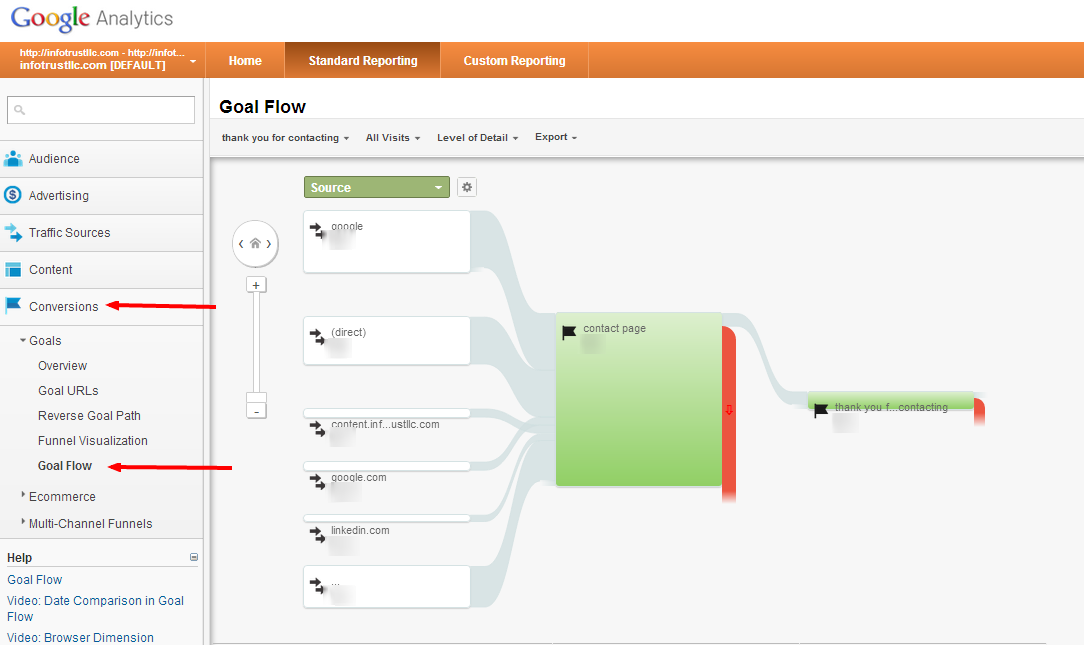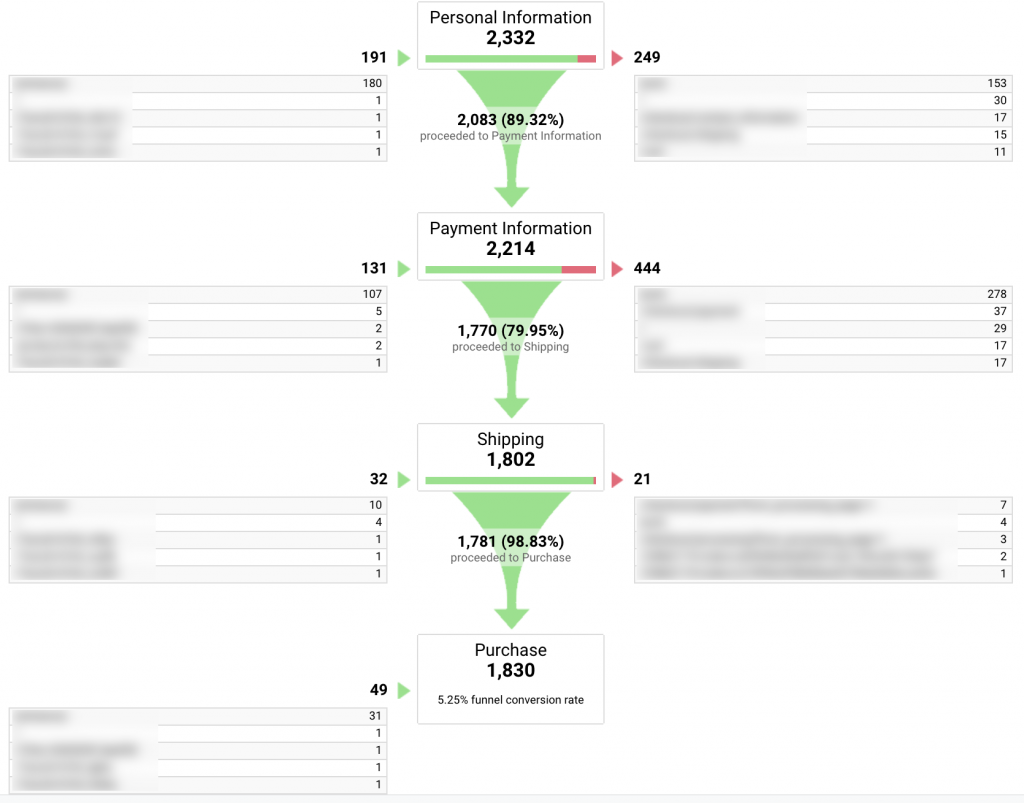Exploring What Data Is Google Analytics Goals Unable to Track
Exploring What Data Is Google Analytics Goals Unable to Track
Blog Article
Discover the Limitations of Google Analytics Goals: Introducing the Information Kind That Remain Untrackable
As organizations progressively depend on data-driven decision-making, recognizing the limitations of tools like Google Analytics ends up being vital. While Google Analytics Goals offer beneficial understandings into individual communications, there exist information kinds that elude tracking, posturing difficulties to a comprehensive understanding of individual behavior. These untrackable information types increase questions concerning the precision and completeness of the analytics data that companies heavily count upon for their digital strategies. Interested to reveal the concealed blind spots in your information analysis procedure?
Incomplete Customer Trip Tracking
Insufficient user journey monitoring within Google Analytics can prevent the ability to properly evaluate customer actions. When the user trip is not totally tracked, there are spaces in the data that avoid a detailed understanding of exactly how individuals engage with a site. This absence of insight can lead to missed out on opportunities for optimization and renovations to the individual experience.
One typical concern with insufficient customer trip monitoring is the inability to see the complete path that individuals take in the past finishing a goal or leaving the site. Without this info, it is testing to identify where individuals may be coming across challenges or friction points that stop them from converting. In addition, incomplete monitoring can obscure the influence of certain advertising efforts or internet site adjustments on user habits.
To address this limitation, it is essential to set up correct monitoring mechanisms within Google Analytics to record the entire individual journey. This might entail establishing up occasion monitoring, goal funnels, or making use of devices like Google Tag Manager to make sure that no essential interactions go unrecorded. By gaining a thorough view of the user journey, website owners can make even more enlightened decisions to improve user involvement and drive conversions.
Attribution Challenges
Browsing via attribution challenges in Google Analytics requires an extensive understanding of just how different touchpoints contribute to the general conversion process. Attribution challenges develop from the complexity of contemporary customer trips, where individuals engage with several channels before converting.
One typical acknowledgment difficulty is the trouble in attributing conversions to the correct resource, particularly in cases where customers engage with several channels prior to converting. This can bring about mistakes in determining which advertising and marketing efforts are driving the most conversions. Additionally, cross-device tracking postures another attribution difficulty, as individuals usually switch over in between tools during their trip, making it testing to track their interactions perfectly. Marketing professionals should meticulously translate and analyze acknowledgment data to make informed decisions and enhance their advertising and marketing methods effectively.
Offline Conversions
Provided the challenges related to connecting conversions precisely in online channels, the measurement of offline conversions provides a considerable possibility for marketers looking for an extra extensive understanding of their customers' trip. Offline conversions describe actions that clients take in the physical globe, such as making purchases in brick-and-mortar shops or over the phone, attending events, or involving with published materials - what data is google analytics goals unable to track. These conversions are vital for companies that operate both online and offline, as they offer beneficial insights right into the effectiveness of advertising projects throughout different touchpoints
Tracking offline conversions commonly posed a significant challenge for marketing professionals, as it was testing to connect these actions back to particular online communications precisely. Nonetheless, with advancements in modern technology, such as the integration of CRM systems, special identifiers, and coupon codes, services can now connect the gap between online and offline data to gain a more all natural sight of client actions. By successfully measuring offline conversions, online marketers can maximize their approaches, allot sources much more efficiently, and inevitably enhance the overall consumer experience.
Cross-Device Tracking
Cross-device monitoring plays an important role in understanding the interconnected nature of customers' digital communications throughout multiple devices. In today's omnichannel globe, where individuals seamlessly switch over in between smart devices, desktop computers, and tablet computers, tracking their behavior throughout these devices is crucial for marketers to gain a detailed view of their client journey.

Additionally, personal privacy concerns and laws such as GDPR and CCPA have even more complicated cross-device monitoring. With customers requiring more control over their data and enhanced limitations on monitoring modern technologies, online marketers must locate ingenious and privacy-compliant means to attach individual interactions across devices.
Dynamic Content Engagement
Comprehending customer interaction with dynamic content is crucial in enhancing digital marketing methods for enhanced target market interaction. Dynamic web content describes internet site aspects that change based on user behavior, choices, or various other variables, offering a tailored experience. Nonetheless, tracking user communications with dynamic web content positions difficulties for typical analytics devices like Google Analytics.
While Google Analytics can track basic communications like clicks and web page views, it may struggle to catch even more nuanced interactions within dynamic web content. what data is google analytics goals unable to track. Metrics such as time invested in specific dynamic aspects, hover activities, or interactions within pop-ups are commonly not easily quantifiable making use of basic tracking methods. This constraint impedes marketing experts' ability to completely comprehend how customers are involving with dynamic content and tailor their methods accordingly

Conclusion
In final thought, Google Analytics objectives have restrictions in tracking incomplete customer journeys, connecting conversions accurately, recording offline conversions, tracking cross-device interactions, and gauging navigate to this site vibrant web content interaction. These constraints highlight the significance of exploring additional monitoring techniques and devices to acquire an extra detailed understanding of customer habits and conversions past what Google Analytics can offer.
While Google Analytics Goals deal useful insights right into user interactions, there exist information types that avoid tracking, positioning difficulties to a comprehensive understanding of user actions.Incomplete individual journey tracking within Google Analytics can prevent the capacity to precisely examine customer behavior. When the individual journey is not completely tracked, there are gaps in the data that avoid a thorough understanding of exactly how individuals engage with a web site.One Source usual problem with incomplete customer trip tracking is the lack of ability to see the full path that individuals take in the past finishing an objective or leaving the site. By getting a detailed view of the user journey, website owners can make even more informed choices to enhance customer involvement and drive conversions.
Report this page